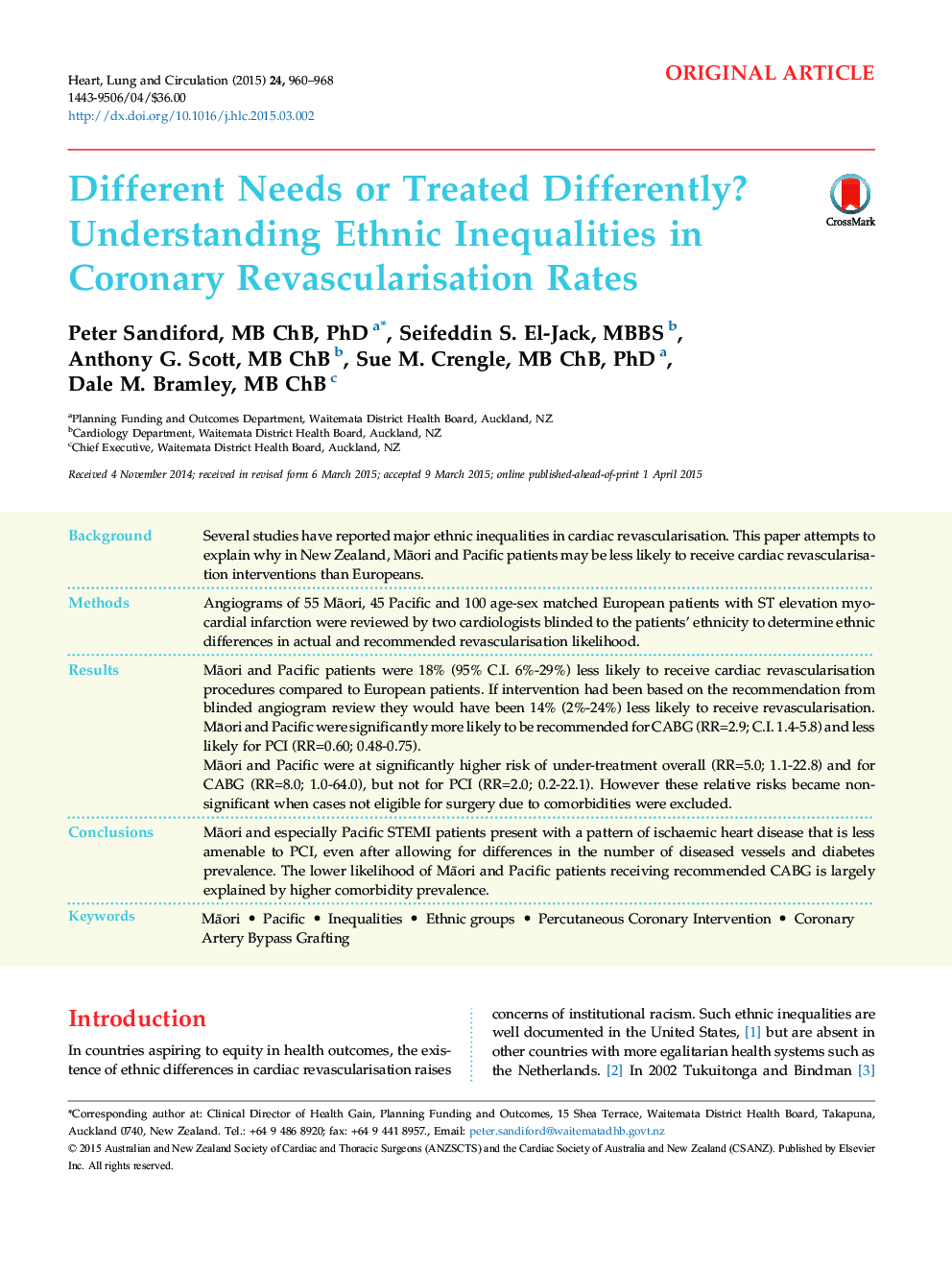| Article ID | Journal | Published Year | Pages | File Type |
|---|---|---|---|---|
| 2917720 | Heart, Lung and Circulation | 2015 | 9 Pages |
BackgroundSeveral studies have reported major ethnic inequalities in cardiac revascularisation. This paper attempts to explain why in New Zealand, Māori and Pacific patients may be less likely to receive cardiac revascularisation interventions than Europeans.MethodsAngiograms of 55 Māori, 45 Pacific and 100 age-sex matched European patients with ST elevation myocardial infarction were reviewed by two cardiologists blinded to the patients’ ethnicity to determine ethnic differences in actual and recommended revascularisation likelihood.ResultsMāori and Pacific patients were 18% (95% C.I. 6%-29%) less likely to receive cardiac revascularisation procedures compared to European patients. If intervention had been based on the recommendation from blinded angiogram review they would have been 14% (2%-24%) less likely to receive revascularisation. Māori and Pacific were significantly more likely to be recommended for CABG (RR=2.9; C.I. 1.4-5.8) and less likely for PCI (RR=0.60; 0.48-0.75).Māori and Pacific were at significantly higher risk of under-treatment overall (RR=5.0; 1.1-22.8) and for CABG (RR=8.0; 1.0-64.0), but not for PCI (RR=2.0; 0.2-22.1). However these relative risks became non-significant when cases not eligible for surgery due to comorbidities were excluded.ConclusionsMāori and especially Pacific STEMI patients present with a pattern of ischaemic heart disease that is less amenable to PCI, even after allowing for differences in the number of diseased vessels and diabetes prevalence. The lower likelihood of Māori and Pacific patients receiving recommended CABG is largely explained by higher comorbidity prevalence.
